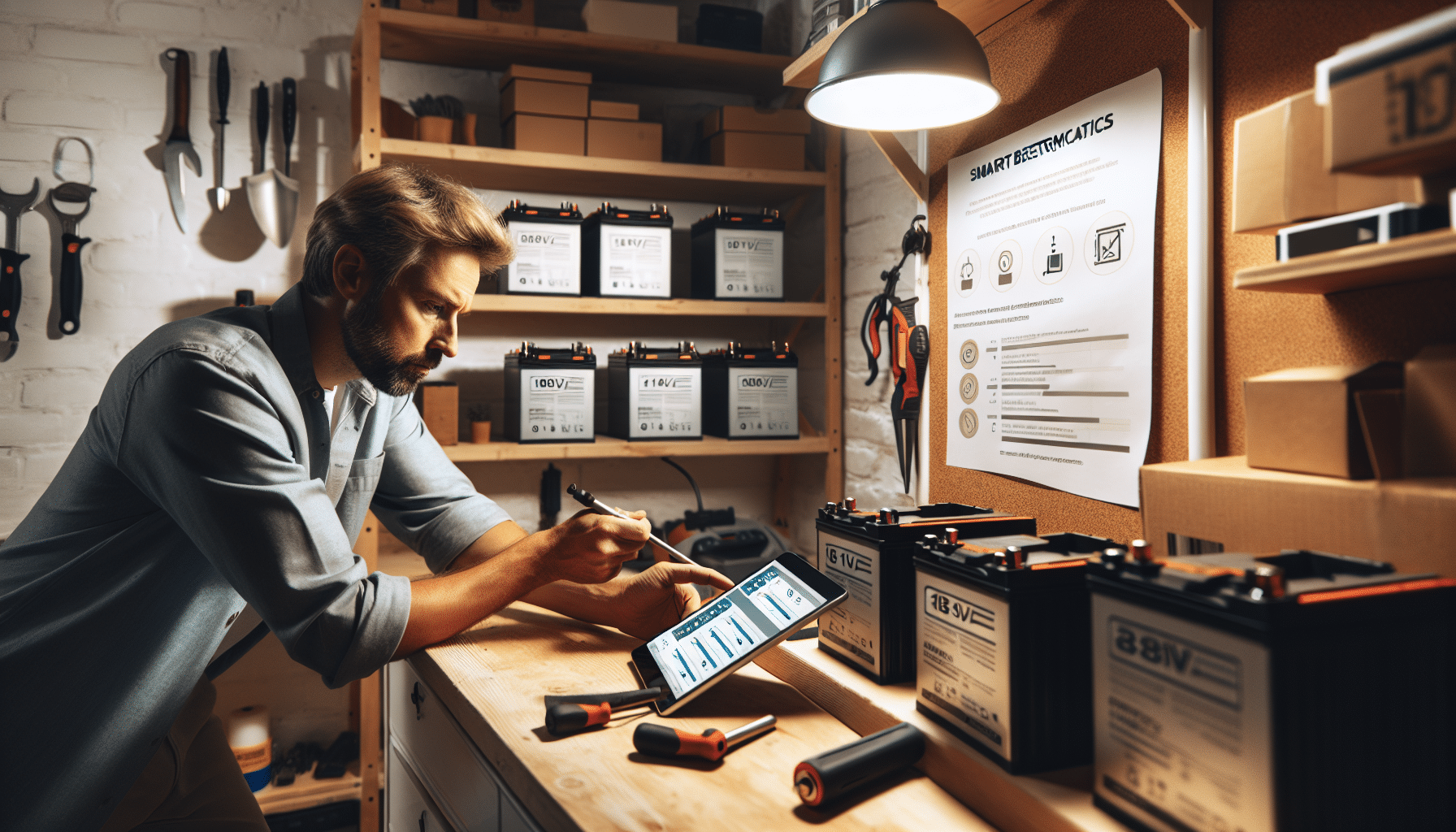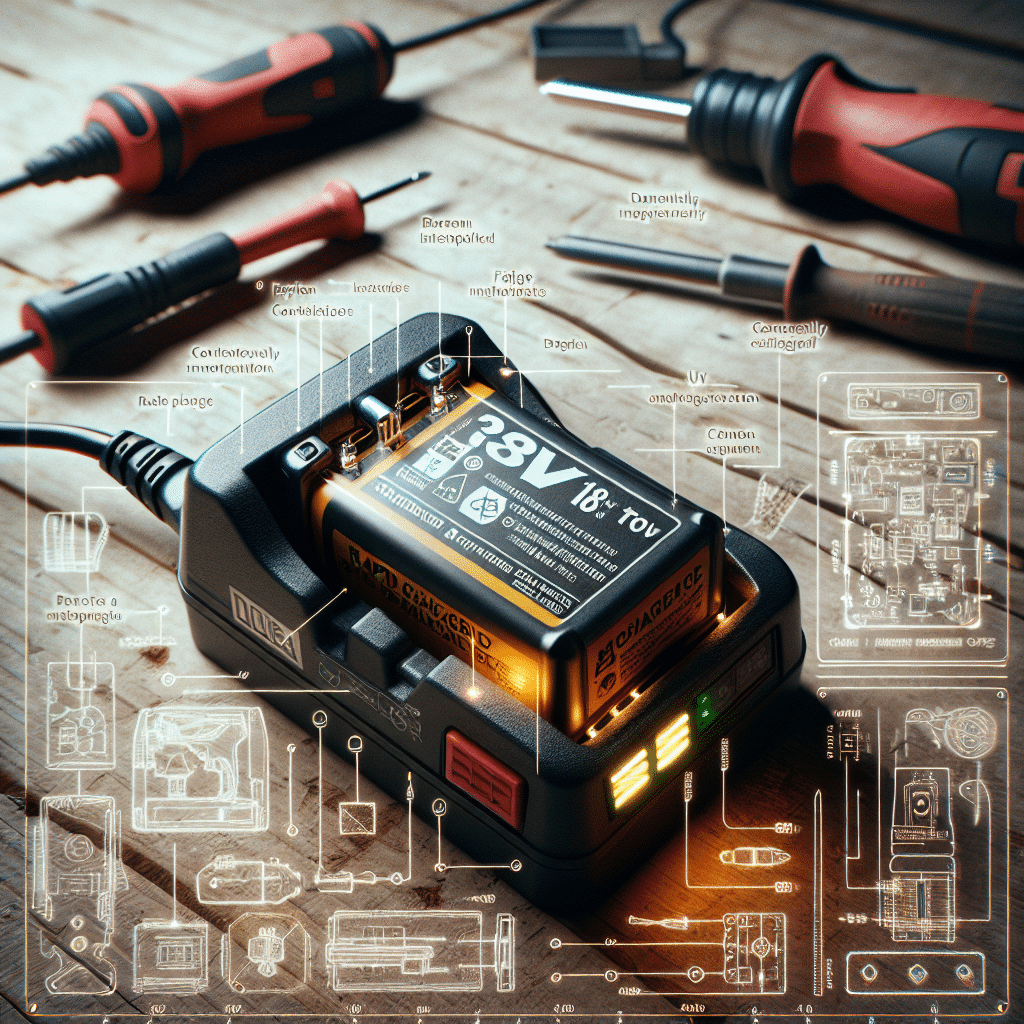5 Myths About Fast Charging Makita Batteries—Debunked
In This Article
- Fast charging doesn’t overheat Makita batteries thanks to built-in cooling systems.
- Lithium-ion top-off charging is safe and effective — full discharges are not required.
- Use only Makita-certified chargers to avoid damage and voided warranties.
- Battery degradation is more tied to misuse than fast-charging practices.
- Runtime loss is due to environmental or ageing factors, not charge speed.
- Professional maintenance routines significantly extend battery health.
- Look for chargers with diagnostic and cooling functionality.
- Follow field-tested best practices to keep your batteries in optimal condition.
- Trust Makita’s integrated engineering for safe, long-lasting power delivery.
- Ignore outdated myths — charge smart, work smarter.
Understanding Fast Charging Technology
Why Rapid Charging Exists for Makita Batteries
The rise of cordless power tools has led to an increasing demand for faster, more efficient charging solutions. One of the more persistent misconceptions among users involves “Makita fast charging myths”, where concerns around battery lifespan and overheating dominate the conversation. However, Makita’s engineering approach ensures that these worries are largely misinformed.
Makita fast chargers employ smart diagnostics and active cooling systems to provide rapid yet controlled charging cycles. These chargers are designed for professional-grade use, meaning they’re engineered to deliver speed without compromising safety. The ability to recharge a battery swiftly is invaluable on job sites, reducing downtime and boosting productivity. Users often fear that fast charging artificially shortens the cell’s lifespan, but the integrated electronics carefully manage voltage and temperature to counteract such risks.
In truth, the real cause of premature degradation is misuse – such as harbouring batteries in extreme environments, or combining incompatible chargers and packs. Makita’s platform uses built-in microchips to actively communicate between charger and battery, maintaining a safe charging current throughout the process. So when used correctly, Makita’s fast chargers are as reliable as they are speedy.

Myth #1: Fast Charging Overheats Batteries
Explained by Modern Charger Design
This is one of the most tenacious Makita fast charging myths. Many believe that charging a battery quickly must generate excessive heat — potentially damaging battery cells or even causing malfunctions. While it’s accurate that heat is a natural byproduct of charging, Makita counters this through several advanced engineering features.
Makita’s fast chargers such as the DC18RC come equipped with built-in cooling fans. These fans actively draw cool air across the battery pack during recharge, preventing thermal build-up. Simultaneously, temperature sensors monitor the cells in real time, causing the charger to pause or slow charging if limits are approached. This dual defence keeps the battery within safe thermal operating ranges throughout the cycle.
Additionally, users should know that overheating is more frequently caused by environmental neglect than charging itself. Charging your Makita battery under direct sunlight, in a van in summer, or immediately after high usage is more dangerous than using a fast charger. In contrast, using fast chargers per manufacturer guidance introduces minimal thermal risk.
“Fast charging doesn’t cause damage — improper usage does. Makita’s designs are robust and self-regulating.”
Myth #2: Battery Degradation Is Inevitable
How Makita’s Battery System Manages Lifecycle
Another of the common Makita fast charging myths is that rapid charging inherently shortens battery life. This idea likely stems from older battery technologies like NiCad, which suffered from memory effects and low tolerance to quick charging. However, modern lithium-ion batteries, especially when used within the Makita LXT ecosystem, are worlds apart.
Makita batteries and chargers feature Digital Communication Technology that exchanges data including cell condition, history of use, and optimal charging parameters. Every charge cycle is customised in real-time. This ensures the battery gets only the current it can handle safely, making degradation less a matter of charging speed and more an issue of overall usage habits.
Moreover, Makita batteries include overload, overheat, and over-discharge protection built directly into the pack. These protective systems reduce wear triggered by abuse, helping the battery consistently perform over hundreds of cycles. Routine visual checks, clean terminals, and storage at moderate temperatures are more impactful in reducing degradation than slow charging ever could be.
Myth #3: You Must Fully Discharge Between Uses
The Advantage of Lithium-Ion Top-Off Charging
An older belief still circulates – that batteries must be fully drained before recharging. This legend lingers from NiCad and NiMH battery days. Makita fast charging myths like these cause users to adopt counterproductive habits, thereby shortening battery life instead of extending it.
Lithium-ion cells behave differently. In fact, they benefit from partial charges. There’s no memory effect to worry about, and partial top-offs can help maintain capacity over time. Makita lithium-ion batteries are designed to be ready when you are — meaning it’s perfectly safe, and even advisable, to keep them topped off instead of running them flat.
Fully depleting a lithium-ion battery regularly may stress the cells, especially under load. When combined with the fast recharge capability of Makita’s chargers, users can confidently keep their tools powered throughout the day with short charge cycles that do no harm at all.
Myth #4: All Fast Chargers Are the Same
Why Charger Quality and Compatibility Matter
No discussion of Makita fast charging myths is complete without tackling the assumption that any fast charger will do. There’s a dangerous misunderstanding in the market that third-party or generic chargers provide the same benefits as Makita-certified units. This couldn’t be further from the truth.
Makita chargers are calibrated to perfectly match their battery chemistry and circuit design. When users purchase direct replacements from reputable sources like the Makita DC18RD dual port charger, they are guaranteed peak safety and performance — something unauthorised chargers cannot promise. These generic options often lack critical communication protocols or cooling components, resulting in unbalanced charging or, worse, cell damage.
Additionally, fast charging isn’t just about speed — it’s about delivering the correct current profile during each charging phase. Improper charging waves can undervolt or overvolt cells, damaging them permanently. For that reason, it’s imperative to use chargers specifically engineered for your Makita battery platform. Avoiding third-party options is advised unless they meet strict compatibility certifications.
Myth #5: Fast Charging Always Reduces Runtime
Factors That Truly Affect Runtime Efficiency
Fatigue among power tool users can often lead to misguided conclusions. One such claim in the realm of Makita fast charging myths is that chargers refill batteries quickly at the cost of shorter runtime. In reality, charge speed and runtime are independent variables, governed by battery capacity and internal cell health rather than the rate of charge.
The root cause of decreased runtime is typically degradation due to cumulative usage, poor storage, or environmental exposure. If a battery’s runtime has decreased, it’s far more likely that environmental stressors or age are to blame rather than the frequency of fast charging itself. In fact, a healthy battery fast-charged properly should deliver absolutely full runtime capacity.
Furthermore, Makita includes smart balancing circuitry that ensures each cell within a battery pack receives uniform charge. This maintains voltage consistency and power delivery, all of which contribute to efficient and long-lasting use per charge cycle. So rest assured, a fast charge doesn’t mean a fast drain.
Real Maintenance Tips from Industry Pros
Simple Habits to Maximise Battery Life
A wealth of expert advice exists on maximising the life and performance of your Makita batteries. While busting Makita fast charging myths is crucial, cultivating smart usage habits is equally important. Here are time-tested methods employed by trade professionals and DIY veterans alike.
Firstly, always store batteries at room temperature, ideally around 20°C. Extreme cold or heat is a silent killer of lithium-ion health. Secondly, avoid leaving them in the charger overnight. Even smart chargers should only be used for active cycles, then disconnected for efficiency.
Third, always keep battery contacts clean. Dirty terminals foster poor connectivity, leading to inefficient power transfer and overheating. Lastly, rotate batteries in sustained-use environments to evenly distribute wear across your battery pool. Maintenance isn’t time-consuming — it’s strategic.
Choosing the Right Fast Charger
What to Look for in a Makita-Compatible Unit
Buying a fast charger isn’t as simple as picking the most powerful one. You must match the charger to your battery type, tool demands and usage frequency. To navigate past Makita fast charging myths and make an informed choice, consider these critical attributes.
Look for chargers that support active cooling systems, dual or rapid charging ports, and onboard diagnostics. The DC40RA charger, for instance, supports both 18V and 40V lines with exceptionally short recharge times. More importantly, it features cooling systems and cell management.
Compatibility and warranty should drive your decision. Always ensure the charger you consider matches your battery model, as using mismatched voltages or terminals can void your warranty and risk serious damage. Stick with units authorised by Makita or recommended directly in Learn more about Makita Battery Safety, Care & Charging Optimisation. Investing in the right charger pays dividends in performance, reliability, and peace of mind.
Battery Charging Best Practices From the Field
Insights from Professionals & DIY Tool Users
Years of real-world usage has given rise to proven charging routines that sidestep common Makita fast charging myths. Professionals in construction and manufacturing follow stringent protocols to ensure their battery investments last for years.
Avoiding full discharges, charging before a battery becomes too cold, and allowing batteries to cool after intensive use before placing them on charge are all critical steps. Users also prioritise using well-ventilated areas for charging — this not only improves battery life but also maintains charger longevity itself.
These best practices are echoed by hobbyists and professionals alike in Read a related article. The message is consistent: treat your battery gear as professional-grade tools, and they’ll return the favour in performance and longevity.
Conclusion: Ditch the Myths, Charge Smart
Makita fast charging myths persist in the tool community, fuelled by half-truths and outdated experiences. But modern Makita technology has evolved dramatically. With intelligent systems that manage temperature, optimise voltage, and protect against misuse, today’s chargers aren’t risky – they’re indispensable. Avoid misinformation and adopt smart charging routines grounded in real knowledge. Your batteries – and your projects – will thank you.
Great guide on debunk-makita-battery-fast-charging-myths – Community Feedback
Is fast charging bad for Makita batteries?
No, fast charging with a compatible quality charger is safe for Makita batteries. Modern chargers are designed to prevent overheating and protect cell integrity.
Does fast charging shorten battery life?
While fast charging can generate more heat, reputable chargers regulate temperature to minimise impact, so battery life is barely affected when used correctly.
Should I fully charge and discharge my Makita battery?
No. Partial charging is ideal, and avoiding full discharges prolongs lithium-ion battery lifespan. It’s best to top up before dropping below 20%.

